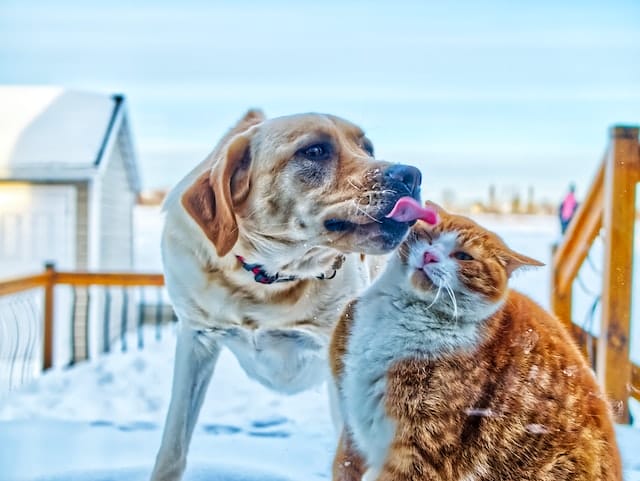
If you have a dog that is aggressive towards cats, it can be difficult to introduce your pet cat to the home. It can also cause tension between the two animals, as well as leave your cat feeling scared and anxious. However, with some patience and proper training, you can help your aggressive dog learn how to get along with your cat.
Consult a dog trainer before you start
A professional dog trainer can help you understand your dog’s body language and give you tips on how to properly train them. They may also be able to offer advice on specific techniques that might work better for aggressive dogs such as positive reinforcement or aversive measures. Namely, whether you decide to consult the experts at Allbreeds dog training, or hire a local animal behaviorist; it is best to consult a professional before you start training. Avoid any confrontations between the animals and focus on positive reinforcement if possible.
Teach basic commands
Basic obedience commands such as sit, down, come, stay, and leave it should be taught before introducing your dog to the cat. This will not only help you have more control over your dog but can also help establish boundaries between them. You can also use these commands to redirect your dog’s attention away from the cat if they show any aggressive behavior or start to chase it.
For instance, if your dog becomes excited when they see the cat, you can tell them to “sit” or “down” and reward them with a treat. This will help them associate positive experiences with the presence of cats. Next, you can teach your dog to “leave it” when the cat is present and reward them with a treat for not chasing it.
Supervise all interactions

When it’s time to introduce the animals, do so slowly and under supervision. Introducing them in a neutral area such as a room that neither animal has been in can help create an environment of neutrality. During their first encounter, keep your dog on a leash and observe how they interact with each other. Give positive reinforcement when the dog is calm and ignore them when they act out.
If you notice that their interactions are different when the dog is not on a leash, you may want to consider using a muzzle. This will help keep your cat safe and allow them to get used to being around the dog without feeling threatened. With proper supervision and training, you can help your aggressive dog learn to get along with your cat.
Create a safe and respectful atmosphere
The first step in training your aggressive dog to get along with your cat is to create an atmosphere of safety and respect. You can do this by teaching your dog basic commands such as ‘sit’, ‘stay’, and ‘leave it’ whenever he interacts with the cat. It’s also important to provide your dog with positive reinforcement whenever he follows these commands.
In addition, give your dog space away from the cat when he needs it. If your dog is feeling overwhelmed or anxious, it’s best to give him a break by having him go to another room for some time alone.
Gradually introduce your cat and dog
Next, you should gradually introduce your cat and aggressive dog to one another in a controlled environment. This should be done slowly, allowing the two animals to get familiar with each other’s presence before they are left alone together. Start off by having both animals on opposite sides of the room, while you are in the middle. Give them time to get used to each other’s presence and reward your dog with praise or treats when he responds calmly to the cat’s presence.
Provide supervised socialization sessions
Once your aggressive dog and cat have become comfortable being in the same room, it’s time to introduce supervised socialization sessions. During these sessions, you can begin to teach your dog how to interact with the cat in a respectful manner. Start off by having both animals on leashes and supervising them while they explore the area together. Make sure to reward your aggressive dog with treats or praise whenever he responds calmly to the cat’s presence.
Know when to call it a day
It’s important to know when to end the training session. If you notice any signs of aggression from your dog or if the cat appears to be stressed out, it’s best to take a break and try again another time. This will help ensure that both animals remain calm and safe throughout the training process.
Namely, if your aggressive dog is starting to bark or lunge at the cat, it’s time to end the session and give them both a break. Being aware of their body language and taking the necessary steps to prevent any aggressive behavior is essential for successful training.
Remember that training your aggressive dog to get along with a cat can take patience and consistent effort. However, with dedication and proper guidance from an experienced professional, you can eventually reach success. So don’t give up and keep practicing with your pup! With time and patience, you can create a harmonious home for your animals.


GIPHY App Key not set. Please check settings